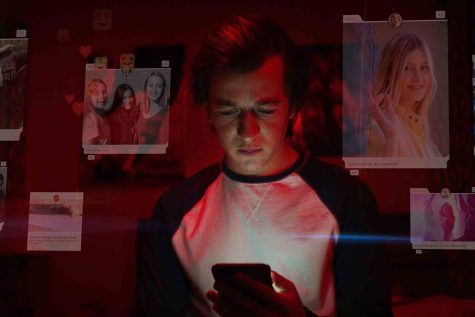Artists and Crew Members Struggle to Get the Show on the Road
March 25, 2020
The world may be put on pause as movies, concerts, festivals, award shows and more have been postponed in wake of the COVID-19 pandemic, but the show must go on for the music industry. With touring, most artists’ main source of income, suspended indefinitely, many stars have had to look for new ways to support themselves and connect with fans.
Cancellations began in late January as the coronavirus spread in Asia. Artists like Khalid and BTS decided to cancel their tours in the region for the safety of themselves and their fans. By February, the virus had spread to Europe, and artists continued to cancel shows, particularly in Italy, the European epicenter of the virus.
It wasn’t until early March that shows in the United States were affected by the coronavirus, with the first major cancellation being SXSW, Austin’s annual film, interactive media and music festival. The first cancellation in the festival’s 34-year history, the loss of the event was a major blow to not only the Austin, Texas music community but to the city’s economy as well. The festival was estimated to bring in over $350 million for the Austin community and draw more than 400,000 attendees from across the globe.
Artists quickly began postponing their tours amid fear of the coronavirus shortly after. Award shows such as the iHeartRadio Music Awards and the Academy of Country Music Awards followed suit and postponed their events to later in the year.
The biggest looming question for many fans, though, was the Coachella music festival. Rumors swirled for days before organizers announced they would postpone until October. The massive two-weekend festival was to feature over 100 acts, including headliners Frank Ocean and Travis Scott.
In light of the uncertain future of touring, artists have taken to social media and other streaming platforms to play live for their fans. Sites like StageIt have existed as a live streaming method for lesser-known artists for years, but the loss of live touring has caused mainstream artists to look for new ways to connect with their fans until we return to normalcy. Some streams may require a subscription or registration, but most are free, with options to directly support artists by downloading music, buying merch or contributing to their “digital tip jar.” Instagram Live and IGTV have been particularly popular ways for artists to play live for fans, with artists such as John Legend, Coldplay, Miley Cyrus, Keith Urban and more sharing “private” concerts on the platform.
As museums, operas, Broadway shows, and other cultural institutions have also closed, they have offered their own digital content. The Metropolitan Opera, for example, launched a free series called “Nightly Met Opera Streams,” which features encore performances from past events streamed every night at 7:30 p.m. EDT. The Grammy Museum has also begun releasing digital programs from its archives, including programming with Billie Eilish, Greta Van Fleet, X Ambassadors and more.
For artists with smaller fanbases who more strongly depend on touring as their major revenue source, companies have made efforts to support artists in their livelihood outside of touring. Bandcamp, a digital storefront and streaming music platform used by hundreds of thousands of artists and record labels, recently announced it would forgo collection of its share of the revenue from sales on its site. Typically, Bandcamp collects 15% of the revenue from sales of music on its site and app and 10% from sales of physical goods. The company’s CEO and co-founder Ethan Diamond shared the motivation behind Bandcamp’s actions, stating, “For many artists, a single day of boosted sales can mean the difference between being able to pay rent or not. Still, we consider this just a starting point. Musicians will continue to feel the effects of lost touring income for many months to come, so we’re also sharing some ideas below on how fans can support the artists they love and how artists can give fans new, creative ways to provide support.”
There is more to the music industry than just artists, though. The hidden impact of the coronavirus on the music industry lies in thousands of workers who perform the labor that allows tours to go on. Sound engineers, lighting technicians, hospitality workers, merchandise sellers and more often go unseen by the public, but they are essential members of the industry. These crews are mostly not unionized and typically bounce from job to job. In the height of the touring season, crew members live an exhilarating and fairly successful life; however, this shutdown has exposed the vulnerability of the touring labor force.
In what The New York Times calls “the original gig economy,” touring crews are essentially freelancers, with many members not having health insurance or unemployment benefits. “When a single tour cancels, it’s a financial hardship for a small crew,” one crew member told The New York Times. “In this case, the fear is much deeper, because the entire industry is just grinding to a halt.”
While some may work day jobs, in the wake of the coronavirus, it is nearly impossible for tour workers to easily step back into the workforce. Especially considering the fact that a popular second job for crew members is bartending, the closing of many bars and restaurants in efforts to prevent the spread of the virus has worsened the blow to music’s labor force. Whereas other types of workers can work from home, crew members do not have this luxury — they must be on the road to have a job.
Heading into the all-important summer touring season, the entire music industry faces an uncertain future. Whether touring resumes in a few weeks or a few months, artists are dedicated to helping fans adjust to the new reality. The show must go on, even if that means taking the show online for the foreseeable future.












If you want a picture to show with your comment, go get a gravatar.